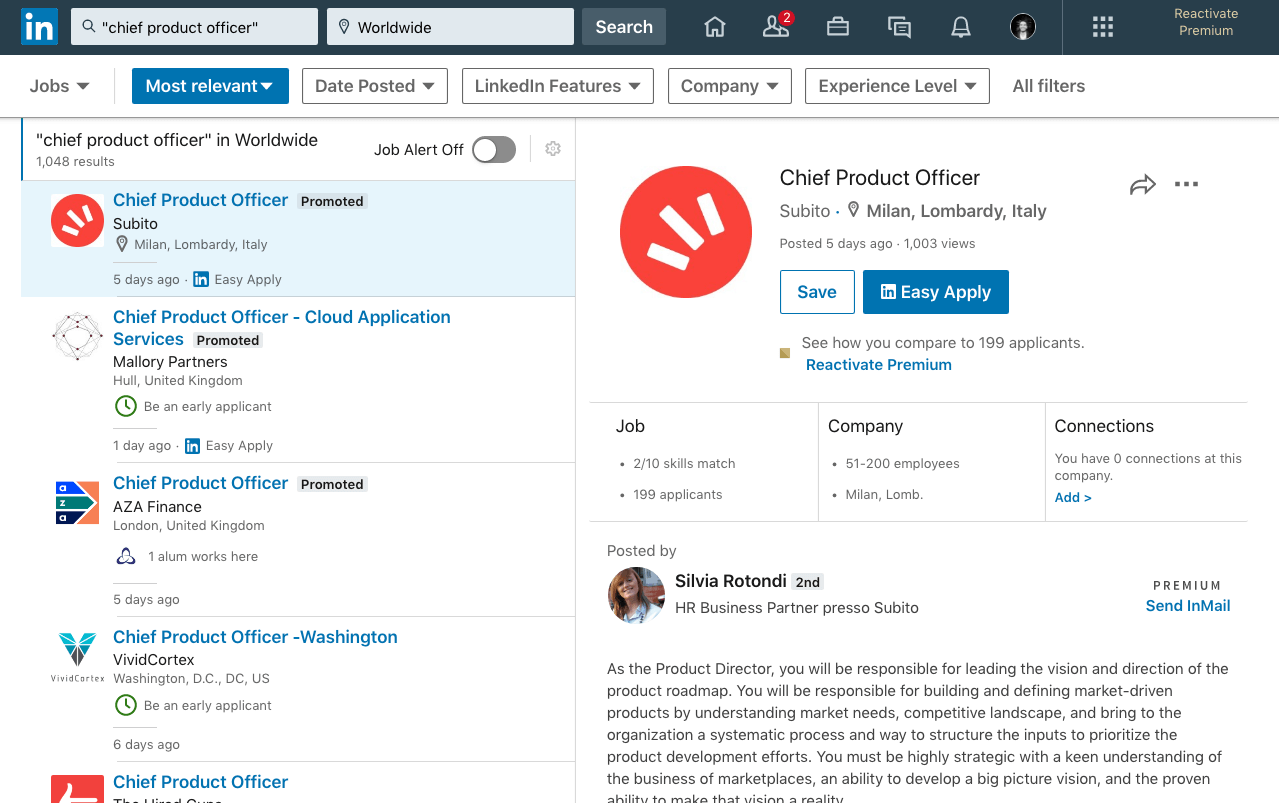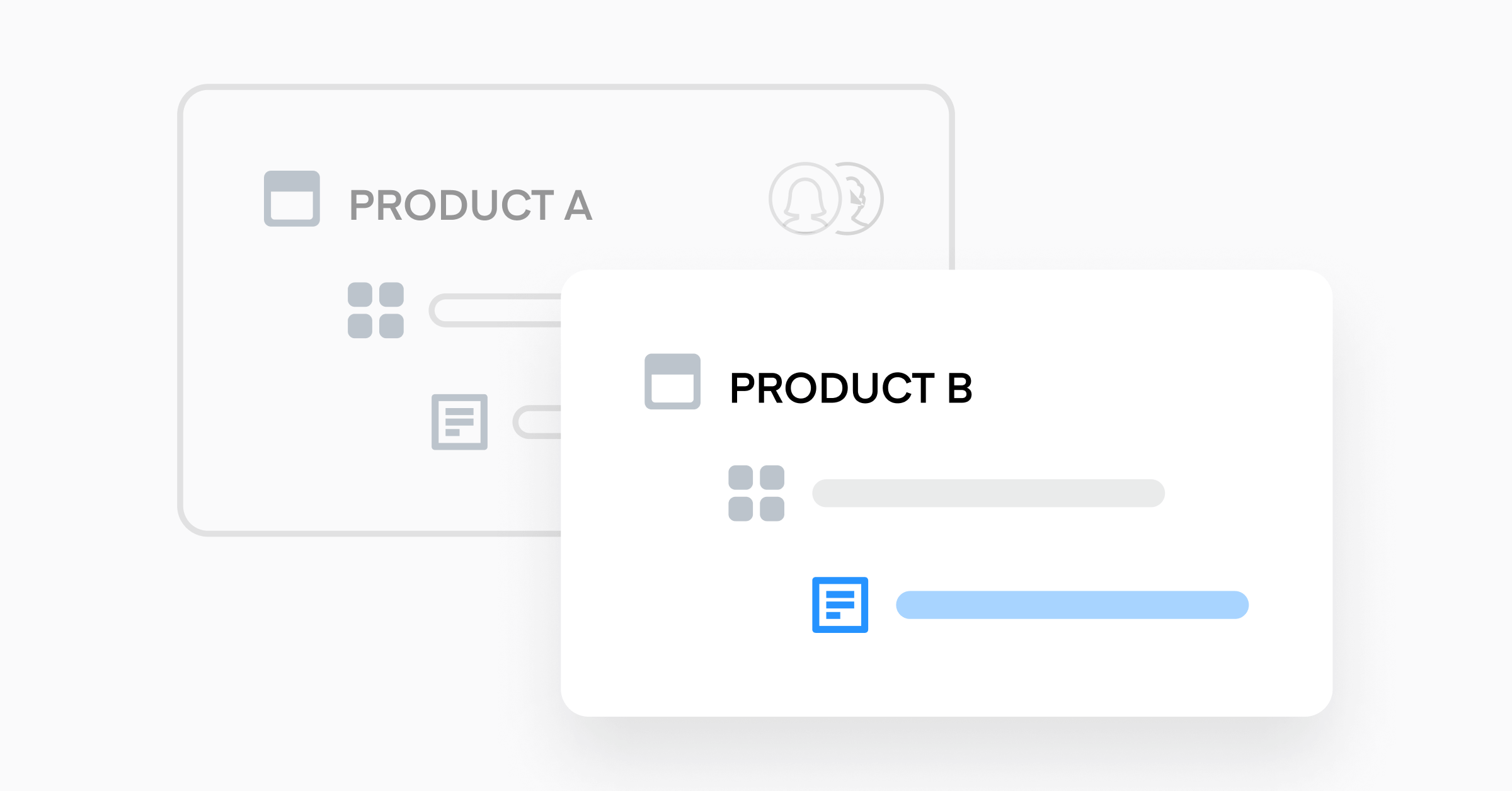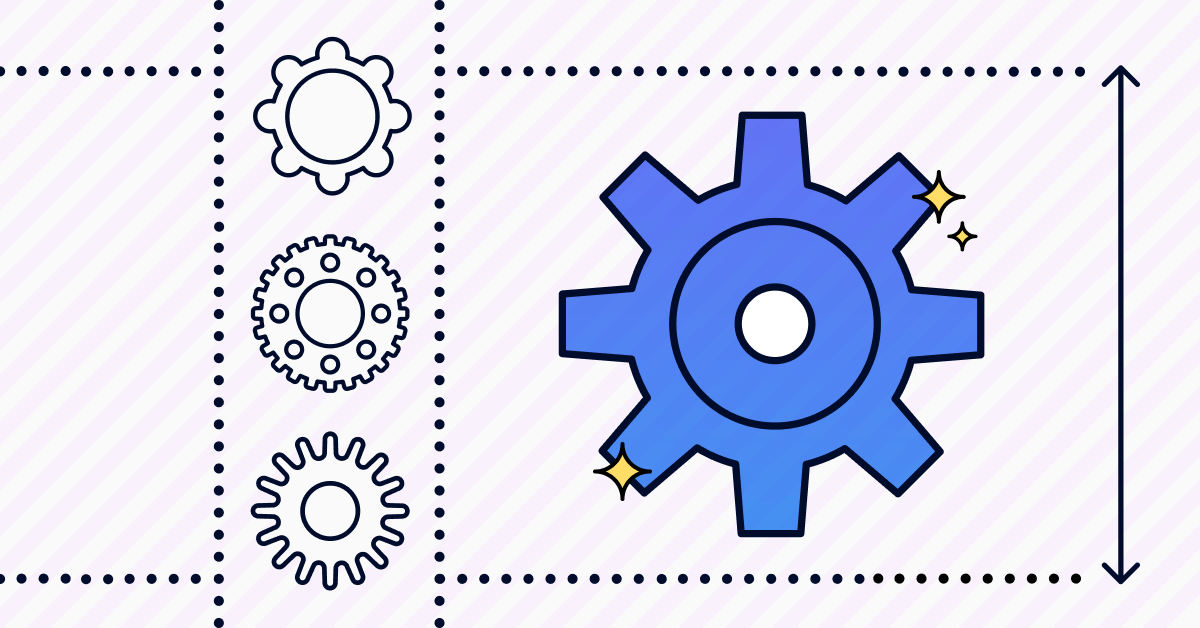What does a Chief Product Officer do? A close look at an up-and-coming role

“Digital transformation is the process of using digital technologies to create new — or modify existing — business processes, culture, and customer experiences to meet changing business and market requirements. This reimagining of business in the digital age is digital transformation.” — Salesforce
Digital transformation is propelling the product management function into the limelight. From August 2017 to June 2019 alone — a short two-year period — the number of open product manager roles have grown an astounding 32%. This trend shows no signs of slowing down.
Why? It is now more important than ever for organizations to deliver excellent digital product experiences to customers with evolving expectations. Product managers stay on the pulse of customer problems and needs, then use this knowledge to prioritize the products and features to build next. They are the front-line fighters in the age of digital transformation.
With the need to deliver real value via digital products and the associated increase of product managers, organizations are bringing on C-level executives specifically to oversee product. Enter the Chief Product Officer (CPO), the executive responsible for the strategy and execution of all product-related activities. Establishing a product vision, product innovation, product development, product design, and building a product organization all fall under this umbrella.
As of November 2019, there were 1,048 open positions for Chief Product Officer on LinkedIn, 641 of which were posted within the last month alone.

Even organizations in traditional industries are getting on board.
In 2018, H-E-B, a leading supermarket chain with over 100,000 employees, hired its first Chief Product Officer to focus on digital experiences for their customers. Around the same time, The Atlantic hired Alex Hardiman from Facebook as their first Chief Product Officer. The United States Department of Health and Human Services recently hired a Chief Product Officer to deliver a consistent set of digital experiences.
More product leaders than ever now have an active seat in the executive suite. As modern organizational structures evolve, it’s common to see confusion around areas of ownership and division of responsibility. That’s why we are taking a closer look at exactly what a CPO does, the skillsets they need, how they differ from Chief Technology Officers, and where they fit in the modern company.
What is a Chief Product Officer (CPO)?
The Chief Product Officer is a strategic leader, visionary, team supervisor, and an advocate of an organization’s product (or products). The primary goal of the CPO is to lead and facilitate the creation of products that deliver value to both customers and the business. CPOs usually reports to the CEO of the company.
The Chief Product Officer is a strategic leader, visionary, team supervisor, and an advocate of an organization’s product (or products).
Responsibilities of the CPO
As a strategic leader, the Chief Product Officer is in charge of a broad scope of product-related activities:
- Product strategy
- Product vision
- Product design
- User research
- Product development
- Product growth and marketing
- Product analytics and metrics
- Structuring the product organization
- Interviewing, recruiting, and supervising product employees and teams
In other words, the CPO is in charge of initiatives across the entire product lifecycle — from customer discovery and user research to development and delivery.
From analyzing numerous CPO job descriptions, we have identified some of the skills needed to excel in the role:
1. Leadership
CPOs need excellent leadership skills to supervise and oversee the entire product organization. This ensures that initiatives run smoothly across internal teams, customers, and stakeholders.
Capable CPOs facilitate communication across the company (between engineers, designers, marketers, customer-facing teams, etc.) and prevent organizational silos. They act as a supervisor to product leads who are responsible for development, UX, and marketing. Thus, they should also have extensive experience in managing and mobilizing cross-functional teams.
2. Strategic product vision
CPOs are responsible for the “why” of the product and what to build next. They must then align the company around their overarching vision. When it comes to individual features and products, CPOs ensure that they are in line with business objectives and make adjustments when necessary.
3. Sensitivity to customers and users
One of the crucial responsibilities of CPOs is to deeply understand the problems, needs, and desires of customers. The customer discovery conducted by the CPO (and other members of the product team) are necessary to build excellent product experiences, identify proper positioning in the market, and more. This due diligence leads to product success even in the most competitive of industries.
4. An eye for data
As the leader of product, the CPO must make objective, data-driven decisions. Seasoned CPOs define the metrics related to product performance and track them on an ongoing basis.
Here are some of the metrics a CPO might oversee:
- Revenue and profits
- User activity and engagement within the product
- Churn rate and retention
Quantitative and qualitative data is also used by CPOs to evaluate whether products or specific features have reached product/market fit.
Chief Product Officer vs. Chief Technology Officer
Despite the rise of the CPO role, confusion still exists around the difference between the Chief Product Officer and Chief Technology Officer (CTO).
Does an overlap between these two roles exist? How are they different?
As Chris Moore states, “The CPO and CTO should share the same goal: To build and deliver the best possible experiences for customers and subsequent value for the company.”
However, the roles differ in their approach to achieving this goal.
On a strategic level, the CPO focuses on the why of the product while the CTO on the how — how development will be carried out and how the product will be implemented and delivered.
The CPO focuses on the why of the product while the CTO on the how.
The CPO focuses on collecting and understanding customer insights to drive product decisions. The CTO, on the other hand, relies on the CPO’s knowledge of customers to deliver value through technology.
The CPO measures and evaluates qualitative and quantitative data related to the product experience. The CTO tracks product performance metrics and KPIs associated with the performance of development teams.
Ultimately, the CPO and CTO should align on the same company vision and work together as a team to build the best product for their customers.
The rise of the Chief Product Officer
With the growing demand for the role of Chief Product Officer, there is high potential for product people to take their career to the next level. To climb the ladder into this role, you must build excellent strategic, analytical, and communication skills, as well as demonstrate a talent to motivate and inspire product employees and cross-functional teams.
Being a great CPO involves developing a multidisciplinary skillset and wearing different hats, but those who manage this growth effectively will have the opportunity to make a real impact. For many, it is worth the work.
. . .
Productboard is a product management system that enables teams to get the right products to market faster. Built on top of the Product Excellence framework, Productboard serves as the dedicated system of record for product managers and aligns everyone on the right features to build next. Access a free trial of Productboard today.





